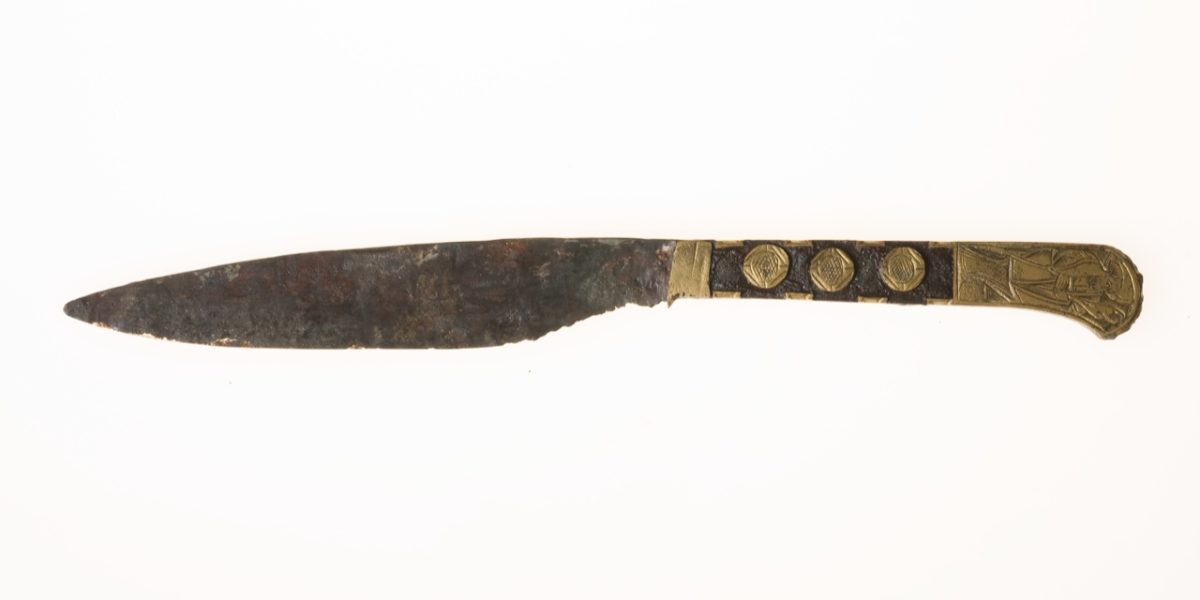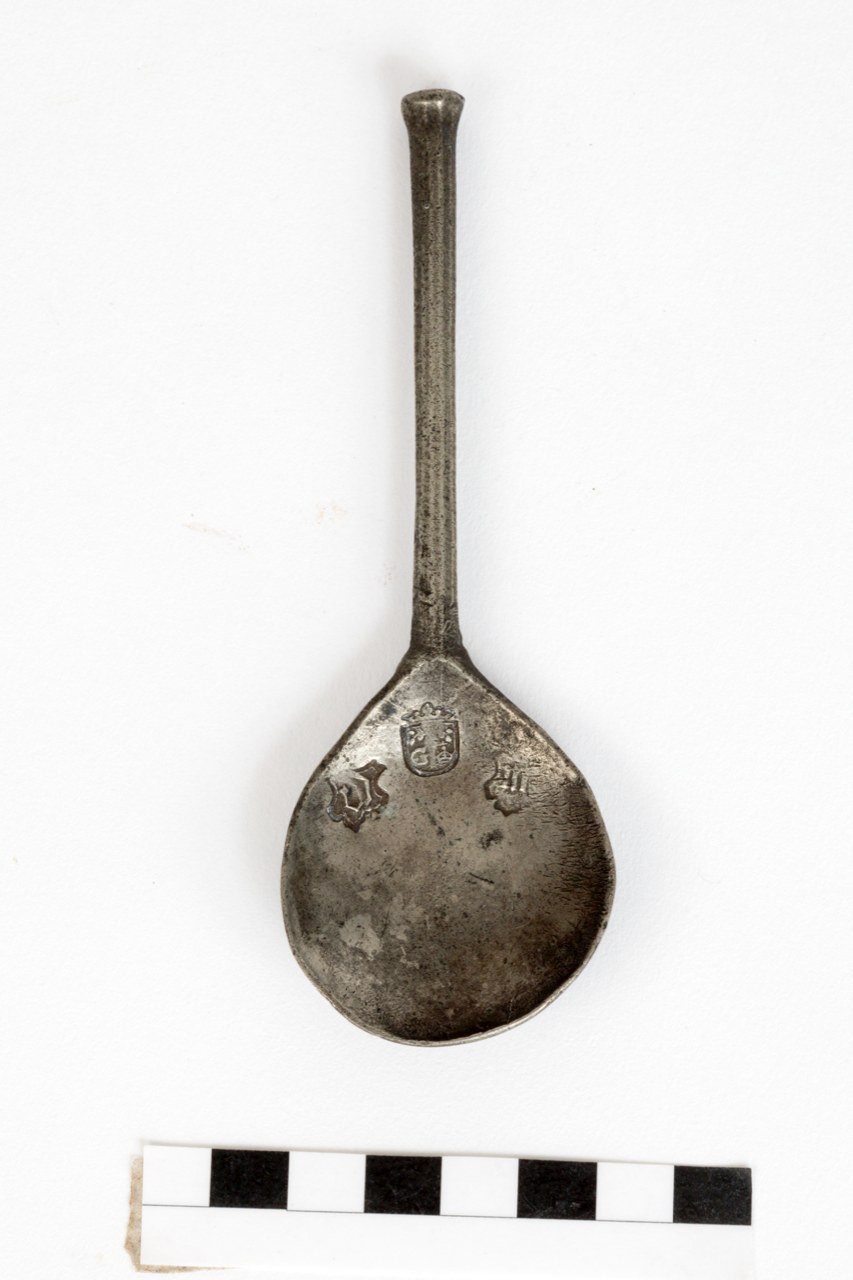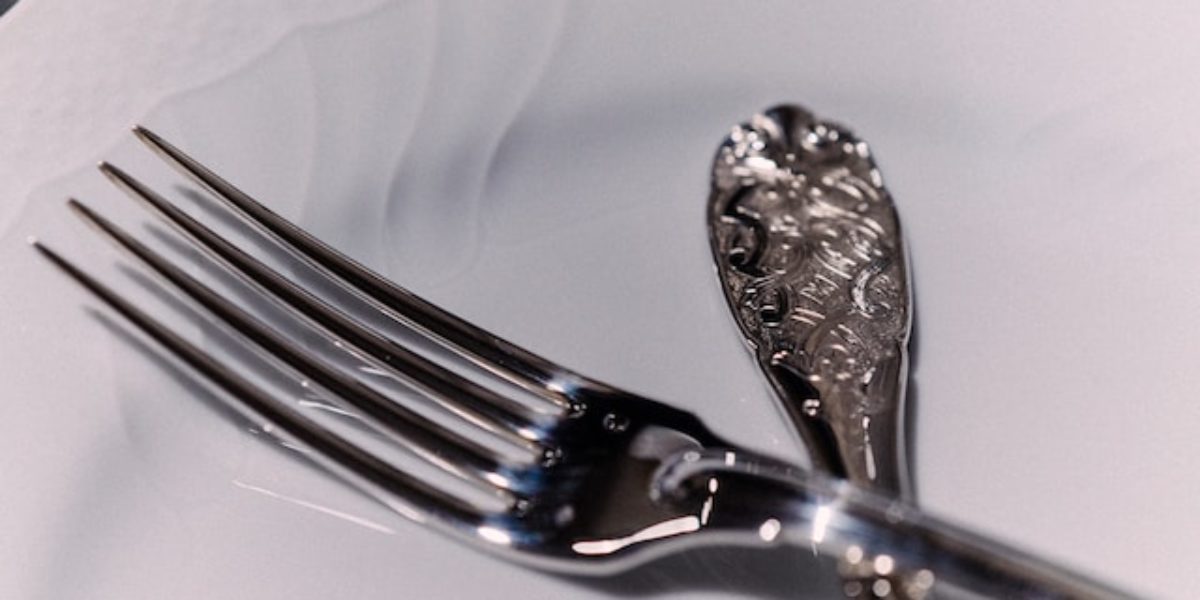Ruurd Kok is an archaeologist, journalist and author. For the Third Floor, he wrote the article below.
It’s long been the norm in the Netherlands and many other countries to eat your food with a knife and fork, which you find nowadays laid out neatly on either side of your plate. Go back a few centuries, though, and there was no fork to be seen. Knives and forks originated in their own ways, a development illustrated by archaeological finds.
Cutlery
We don’t really need cutlery at all. Most dishes could be eaten perfectly well with your fingers and you can drink soup from the bowl. All the same, a huge variety of cutlery has arisen over time. Different sets exist for lunch, dinner and fish dishes. In the case of spoons alone, specific types exist for sauce, vegetables, potatoes, dessert, tea, salt and mustard. Not to mention special petit-four or croquette scoops. ‘Once upon a time, there was obviously no such thing as cutlery’, says Eddie Nijhof, who has been working at the municipal archaeological department in Den Bosch since the 1980s. Over the years, he specialized in material culture, which means he studies everyday utensils as an expression of historical customs and habits. Knives, spoons and forks were, of course, used in the past, but there were no matching cutlery sets prior to 1700.
Each implement developed in its own way. Besides images of cutlery in old paintings, archaeological finds are an important source of information in this respect. Excavated knives, spoons and forks are conserved and placed in storage under controlled conditions.

Iron knife with engraved brass siege plates with representations of saints, dating first half of 16th century, excavation castle Annenborch, Rosmalen. Heritage collection, municipality of ‘s-Hertogenbosch, photo Marc Bolsius ‘s-Hertogenbosch.
World fame
‘Knives from Den Bosch were famous throughout the world. They were an important export product, along with pins and cloth’, Nijhof says. We know this from, among others, the Italian historian Guicciardini (1521–1589), whose ‘Description of the Low Countries’ in 1566 mentions knives from Den Bosch. Archaeologists gained a special insight into local knife production when they excavated a cesspit containing manufacturing waste from a 16th-century knife-maker. The brick-lined pit was also found to have been used to dispose of industrial waste. Detailed analysis of the knife-maker’s waste provided fresh knowledge of the production process and the raw materials used. Trading networks could be deduced from the origin of the raw materials, such as the types of wood used to make the knife handles.
Knives from Den Bosch were sold, Nijhof explains, at the markets in Antwerp and Bergen op Zoom and Portuguese traders took them as far as Spain and colonies in South America. There is even a particular type of knife still known in Spanish as a belduque, a word deriving from ‘Bolduc’, a corruption of ‘Bois le Duc’, the French name for ’s-Hertogenbosch or Den Bosch. It is not surprising, therefore, that archaeologists have uncovered an extensive collection of knives in the Den Bosch area. Over 1,100 knives or parts of knives have been registered in the Den Bosch database of finds, compared to just under two hundred spoons and only 13 forks.
Dining culture
The large differences in these numbers tell us something about the development of dining culture. The picture is slightly distorted by the fact that not everything will have found its way into the ground as waste. Broken objects were discarded along with other refuse, but that did not apply to all materials. The spoons used to eat porridge and gruel in the Middle Ages were made of wood or tin. Broken wooden spoons would not simply have been thrown away but more likely chucked onto the fire. Worn-out tin spoons, meanwhile, will have been melted down to reuse the metal. Because of this, only a proportion of the discarded items ended up in the soil.

In addition to scrapped items, archaeologists turn up things that were lost. Kitchen utensils often went missing when throwing away food residues, and so wound up in cesspits along with other waste. A lost wooden spoon can only survive, however, under favourable, damp conditions, which means they are found less often than tin ones are.
But even if the overall picture of the cutlery finds is somewhat distorted, the large number of knives is certainly very much a reflection of eating habits at the time. Up to the 17th century, knives were the main utensil used at table. This is clearly visible in paintings, such as the group portrait in the Banquet of the Lords of Liere in Antwerp (1523) by an unidentified painter. It shows a company of distinguished gentlemen sitting at a richly laid table in the early 16th century. Besides the pewter dishes piled with food, only knives are visible on the white tablecloth. People in that period carried their own knives, as we see in the painting Peasant Wedding (1600–24) by Pieter Breughel the Younger (1564–1638). The enthusiastically dancing peasant in the picture is clearly wearing a knife in his belt.
Forks
Forks did not make their appearance on the table until much later. The first examples were not actually forks of the kind we know today, but served a different purpose. Special little forks were used, for instance, to spike sticky, candied fruits, and meat forks to carve a joint. Italian princes were using specific forks like this as early as the 14th century and their use spread throughout Europe during the Renaissance, together with Italian cooking culture. The first forks in the modern sense date back to the 16th century, but it took several hundred years more before they became truly widespread. Before that, meat was speared with the tip of a sharp knife or eaten with the fingers.
The advent of the fork completed the familiar set of knife, spoon and fork. All the same, ‘cutlery’ as the collective English word for these utensils derived from the old French word coutel meaning knife. The Dutch word bestek and the French couvert, by contrast, arose in the 17th century and referred to the bag or case in which a personal set of cutlery was carried when attending a dinner. Both words later transferred to the utensils themselves, while the English ‘cutlery’ refers to the items made by a ‘cutler’, originally a knife-maker.
The late appearance of the fork explains why so few of them feature among archaeological finds in Den Bosch. One rare example is a silver fork from the 18th century, at which point such objects were still a new phenomenon on the table. The fact that few forks have been found also reflects changes in the way refuse was dealt with from the 17th century onwards, when cesspools containing household waste gradually disappeared. This has reduced archaeologists’ insight into later forms of cutlery, including the fork.
Cutlery cases
Despite the important role that knives had played at table for centuries, they were not included in the first cutlery sets offered for sale in special boxes or cases. ‘Dutch cutlery sets from before the Second World War don’t actually contain knives’, the former chef and cutlery collector IJf van Lieshout says. ‘When receiving guests, a special set was placed on the table, consisting of a large knife and fork, which were used to cut the meat at the table.’ According to Van Lieshout, this was because the meat was now carved in the kitchen. After the Second World War, separate sets of knives were offered for sale to supplement the older cutlery sets.
Another explanation is also offered, however, for the lack of knives in such sets for so many years. According to the cutlery collector Saskia, wealthy townspeople presented their guests with a cutlery set consisting of silver spoons and forks. Knives were not included because silver does not lend itself to the manufacture of sharp knives.
Tossed out with the garbage
Van Lieshout sells cutlery via his website to help fund his passion for collecting. He has noticed that visitors to the site are mainly looking for things that will match an old set of cutlery that they were given by or inherited from their parents, for instance. ‘Cutlery sets were a standard wedding gift in the 1950s and 60s, but those are now wearing out or need replenishing’, he explains. Silver cutlery, Van Lieshout continues, is almost never used any more. ‘People got lazier and opted for dishwasher-proof stainless steel.’ The orders placed on his site suggest that we mostly break out the silverware on special occasions such as Christmas. Sales then increase in the days that follow, ‘which tells me something has got tossed out with the garbage’. Carelessness of that kind is timeless and archaeologists are grateful for it, as it has yielded a great many finds that shed light on the development of cutlery.

